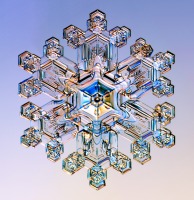If you’ve ever played Command and Conquer then you’ll be familiar with the name TESLA as you’ll inevitably have been zapped by him.
Behind the name though lies the ultimate mad inventor.
Nikola Tesla (1856-1943) was a Croatian born engineer and visionary
genius who almost single-handedly developed technology that harnessed the power of electricity for household use and invented things like electrical generators, FM radio, remote control, robots, spark plugs, fluorescent lights, and giant machines that shot enormous, brain-frying lightning bolts all over the place like crazy. He had an unyielding, steel-trap photographic memory and an insane ability to visualize even the most complex pieces of machinery – he did advanced calculus and physics equations in his head, memorized entire books at a time, and successfully pulled off scientific experiments that modern-day technology STILL can't replicate. For instance, in 2007 a group of lesser geniuses at MIT got all pumped up because they wirelessly transmitted energy a distance of seven feetthrough the air. Nikola Tesla once lit 200 light bulbs from a power source 26 miles away, and he did it in 1899 with a machine he built from spare parts in the middle of the desert. To this day, nobody can really figure out how he pulled it off, because two-thirds of the schematics only existed in the darkest recesses of Tesla's all-powerful brain.
Of course, much like many other eccentric geniuses Tesla was also troubled. He was prone to nervous breakdowns, claimed to receive weird visions in the middle of the night, spoke to pigeons and occasionally thought he was receiving electromagnetic signals from extraterrestrials on Mars. He was also obsessive-compulsive and hated round objects, human hair, jewellery, and anything that wasn't divisible by three. He was also asexual and celibate for his entire life.
Another thing about Tesla is that he conducted the sort of crazy experiments that generally result in hordes of angry villagers breaking down the door to your lab with torches and pitchforks. While he was working on magnetic resonance, he discovered the resonant frequency of the Earth and caused an earthquake so powerful that it almost obliterated the 5th Avenue New York building that housed his laboratory.Picture the scene, stuff started flying off the walls, the drywall was breaking apart, the cops were coming after him and Tesla had to smash his device with a sledge hammer to keep it from demolishing an entire city block. Later he boasted that he could have built a device powerful enough to split the Earth in two.
Nobody dared him to prove it.
During his adventures blinding half of the world with science, Tesla harnessed the power of Niagara Falls into the first hydroelectric power plant, constructed a bath designed to cleanse the human body of germs using nothing but electricity, and created a 130-foot long bolt of lightning from one of his massive coils (a feat which to this day remains the world record for man-made lightning). But perhaps his most frightening invention was his face-melting, tank-destroying, super-secret Atomic Death Ray. In the 1920s he claimed to be working on a tower that could potentially have spewed forth a gigantic beam of ionized particles capable of disintegrating aircraft from 200 miles away and blinking most men out of existence like something out of a Flash Gordon or Buck Rogers comic. His weapon, known as the "Teleforce Beam" allegedly shot ball lightning at 60 million volts, liquefying its targets with enough power to vaporize steel, and while it could shoot further than 200 miles, it's effectiveness beyond that range was limited only by the curvature of the Earth. Luckily for all humans, this crazy insanity never came to fruition – most of the schematics and plans existed only in Tesla's head and when he died of heart failure in 1943, little hard data on the project existed.
Still, J. Edgar Hoover and the FBI confiscated all his personal stuff and locked it away, just to be safe.
Despite being incredibly popular during his day, now Tesla remains largely overlooked among lists of the greatest inventors and scientists of the modern era. Thomas Edison gets all the glory for discovering the light bulb, but it was his one-time assistant and life-long arch-nemesis, Nikola Tesla, who made the breakthroughs in alternating-current technology that allowed for people to cheaply use electricity to power appliances and lighting in their homes. They constantly fought about whether to use alternating or direct-currents (their bitter blood feud resulted in both men being snubbed by the Nobel Prize committee), but ultimately it was Tesla who delivered the fatal kick-to-the-crotch that ended that battle – at the 1893 World's Fair in Chicago, his AC generators illuminated the entire experience, marking the first time that an event of that magnitude had ever taken place under the glow of artificial light. Today, all homes and appliances run on Tesla's AC current.
To summarize Nikola Tesla was one of those super-geniuses whose intellect placed him dangerously on the precipice between "great scientific mind" and "utter madness". He held 700 patents at the time of his death, made groundbreaking discoveries in the fields of physics, robotics, steam turbine engineering, and magnetism, and once melted one of his assistants' hands by overloading it with X-rays - which isn't really scientific, but is still pretty cool. And honestly, if there were one man on this planet who was ever capable of single-handedly destroying the entire planet through his insane scientific discoveries, it was Tesla. That alone should qualify him as a pretty mad genius.




